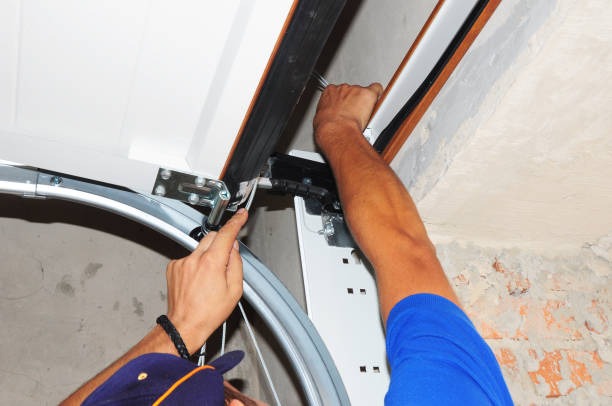A garage door opener is an essential component of your home, providing convenience and security. However, like any mechanical device, it doesn’t last forever. Recognizing the signs that it’s time to replace your garage door opener can save you from unexpected inconveniences and potential security risks.
One of the most apparent signs that your garage door opener needs replacing is excessive noise during operation. While all openers make some noise, a sudden increase in volume or unusual sounds like grinding or squeaking could indicate internal wear or failing components. This not only disturbs the peace but also suggests that the opener might be nearing the end of its lifespan.
Another sign is inconsistent operation. If you find yourself pressing the remote multiple times before the door responds or if it stops halfway without reason, these are red flags indicating malfunctioning electronics or motor issues within the unit. Such inconsistency can be frustrating and may leave your home vulnerable if it fails to close properly.
Frequent breakdowns are another indicator that replacement should be considered. When repairs become discover more frequent and costly than expected, investing in a new opener becomes more economical in the long run. Older models often require parts that are hard to find or expensive due to their obsolescence.
The absence of modern safety features is also a crucial factor to consider when deciding on replacement. Newer models come equipped with advanced safety mechanisms such as automatic reversal systems and sensors detecting obstructions under the door’s path—features not typically found in older units which can pose safety hazards for families with children or pets.
Security concerns play a significant role too; older openers use fixed codes for remote controls which can easily be intercepted by tech-savvy burglars using code-grabbing devices. Modern openers utilize rolling code technology where each use generates a new code, significantly enhancing security against unauthorized access.
Additionally, energy efficiency should not be overlooked as an important sign for replacement consideration. Older motors consume more power compared to newer ones designed with energy-saving capabilities—this difference is noticeable on electricity bills over time.
Finally, aesthetic updates might prompt you towards replacement especially if you’re renovating other parts of your home exteriorly; newer models offer sleek designs complementing contemporary architectural styles while providing enhanced functionality simultaneously.
In conclusion, recognizing these seven signs—a noisy operation, inconsistent performance, frequent breakdowns needing repair beyond economical sense due lack outdated technology lacking necessary safety/security features alongside inefficiencies both functionally/aesthetically—all point towards making timely decisions about replacing aging garage door openers ensuring continued convenience/safety/security within residential spaces effectively/efficiently moving forward into future endeavors confidently securely assuredly!



